‘You Are Not Forgotten’: A Brief History of POW/MIA Recognition Day and Its Flag
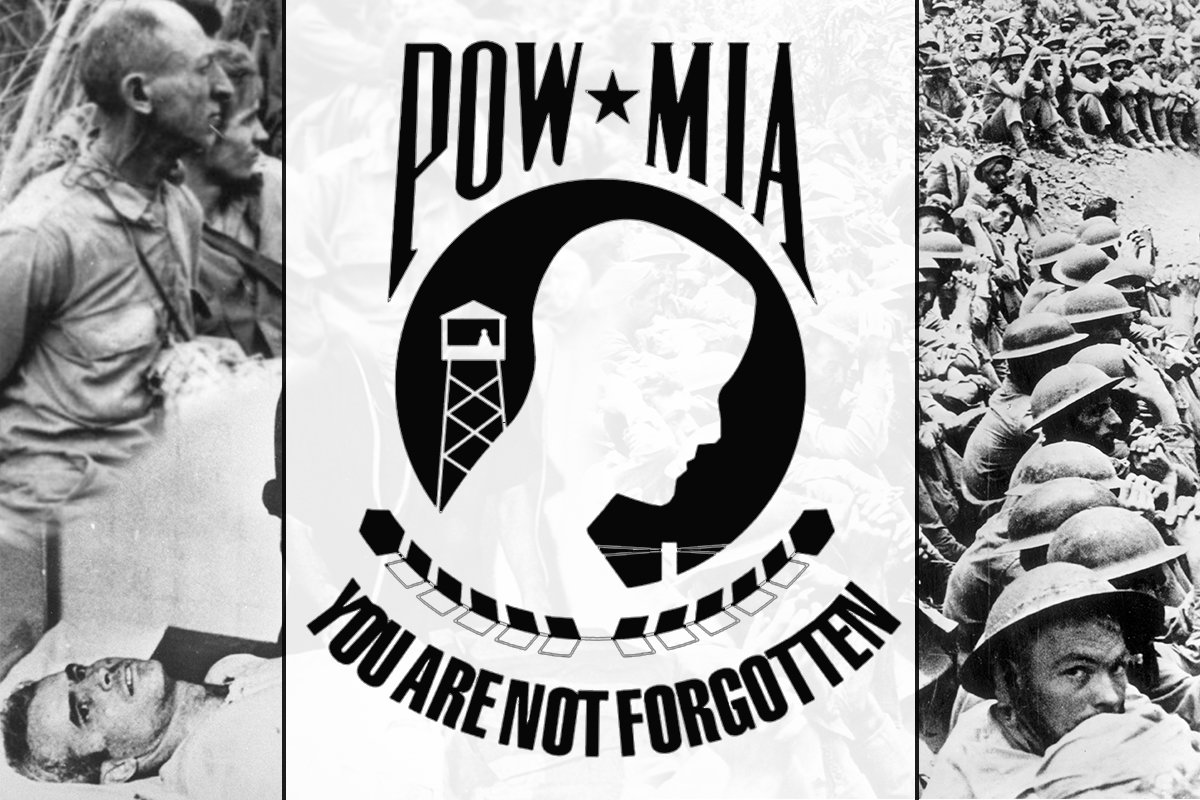
Lieutenant Commander Michael G. Hoff was a pilot in the U.S. Navy. On Jan. 7, 1970, in the midst of the Vietnam War, he was on a reconnaissance mission over Laos. A fire warning light illuminated in the Sidewinder A7A Corsair aircraft he was piloting, and he radioed that he would have to bail out.
Other pilots saw his aircraft go down and explode upon impact with the ground; one pilot saw a flash that was initially thought to be the ejection seat exiting the aircraft. Under heavy enemy fire, two aircraft performed low passes over the impact site to look for a parachute or survivor — they were unsuccessful.
Throughout the history of warfare, many people have died in service to our country and many have returned home safely. But there is also a growing number of unaccounted for service members who were taken as prisoners of war (POWs) or simply declared missing in action (MIA). According to the Defense POW/MIA Accounting Agency, the number of missing or unaccounted for Americans from all conflicts since World War II stands at 81,000.
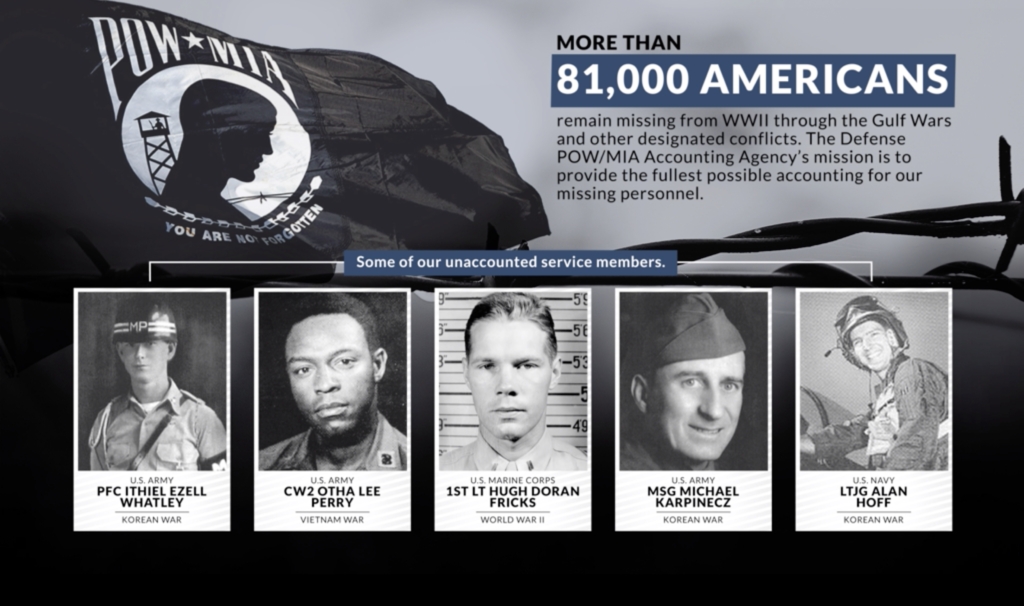
After receiving the news that her husband was MIA in Laos, Mary Helen Hoff joined the National League of POW/MIA Families, which had been incorporated in Washington just a few months prior.
“I once asked in Washington, ‘What do I bury?’” Hoff said to the Florida Times-Union in 2009. “And they said, ‘Well, we’ll give you all the artifacts from the aircraft.’”
During this time she recognized the need for a symbol for those taken prisoner of war (POW) and MIA, so she contacted a flag production agency, Annin & Company, who created flags for all current members of the United Nations. They had recently completed one for The People’s Republic of China.
“I said ‘I don’t want a lot of colors,’” Hoff explained. “I had seen a picture of one of those POWs, wearing black-and-white pajamas. And because of that, I said, ‘We need a stark black-and-white flag.’”
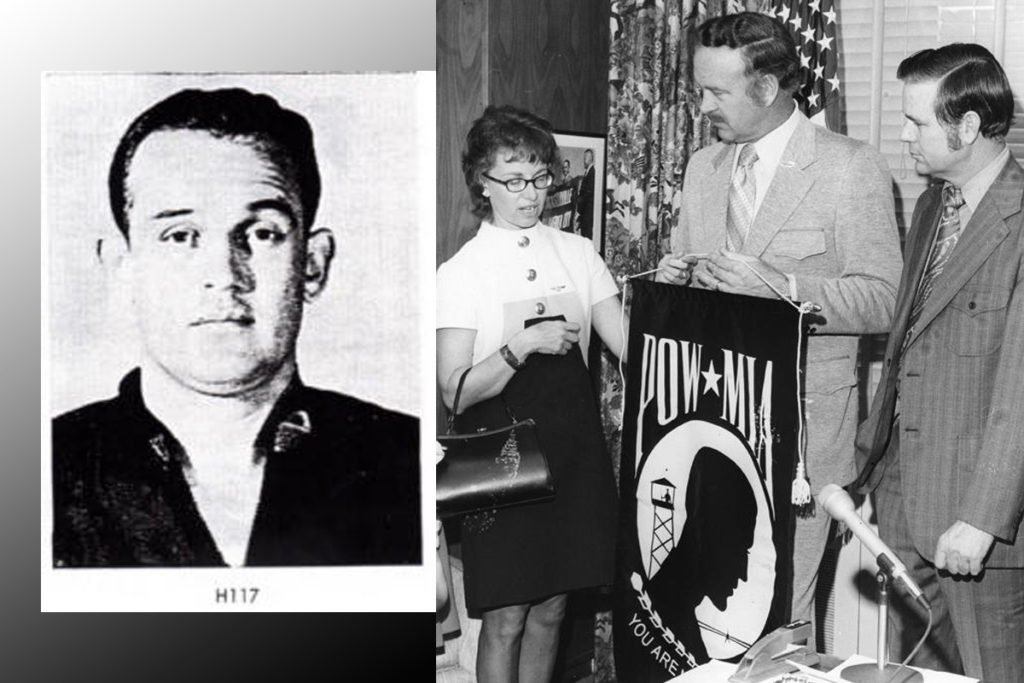
Norman Rivkees, the vice president of the agency, was sympathetic to Hoff’s cause. He put their small advertising department, Hayden Advertising, on the job, where it was tasked to graphic artist Newton F. Heisley. Heisley, who died in 2009, had served in World War II as a C-46 twin-engine transport pilot with the 433rd Troop Carrier Group. After coming home from the war with a Bronze Star, he received a degree in Fine Arts from Syracuse University and worked as a graphic artist at the Pittsburgh Post-Gazette before going to work for Hayden.
After receiving the assignment for the POW/MIA flag, Heisley sketched three different designs. The one he chose featured an image of a gaunt man in profile with a guard tower and a strand of barbed wire in the background, the words “You are not forgotten” across the bottom — the flag we recognize today.
Heisley modeled the flag’s silhouette after his 24-year-old son, who was on leave from the U.S. Marines and looking gaunt while recovering from hepatitis. Heisley also penned the words that are stitched on the banner: “You are not forgotten.”
The National League of POW/MIA Families made a conscious decision to not place any intellectual property protection around the design, allowing it to have widespread use.
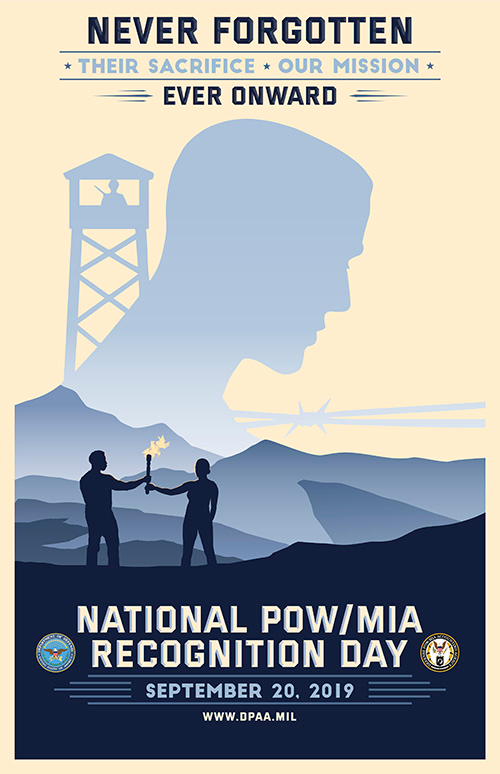
Nearly a decade later — and now 40 years ago — U.S. Congress passed a resolution authorizing a National POW/MIA Recognition Day. Though originally observed on July 18, 1979, it requires a signed proclamation by the President of the United States to be observed each year. Because of this, National POW/MIA Recognition Day has had five different dates. Starting in 1986, however, it has been regularly and nationally observed on the third Friday in September. The POW/MIA flag is an important part of that observance, as well as a daily reminder of those who never made it home.
In 1998, the 105th Congress, as part of the National Defense Authorization Act, required that the POW/MIA flag fly six days every year at the White House; the U.S. Capitol; the departments of State, Defense, and Veteran Affairs; the headquarters of the Selective Service System; at all major military installations as designated by the Secretary of Defense; all federal cemeteries; and all offices of the U.S. Postal Service. The six days on which the flag is required to be flown on are Armed Forces Day, Memorial Day, Flag Day, Independence Day, National POW/MIA Day, and Veterans Day. The flag flies daily at the Department of Veterans Affairs, the National Vietnam Veterans Memorial, the Korean War Veterans Memorial, and the World War II Memorial.
On March 9, 1989, a POW/MIA flag was installed in the U.S. Capitol rotunda. It is the only flag to ever be displayed there, where it serves as a staunch reminder of the sacrifice and commitment of the men and women who serve in the United States military.
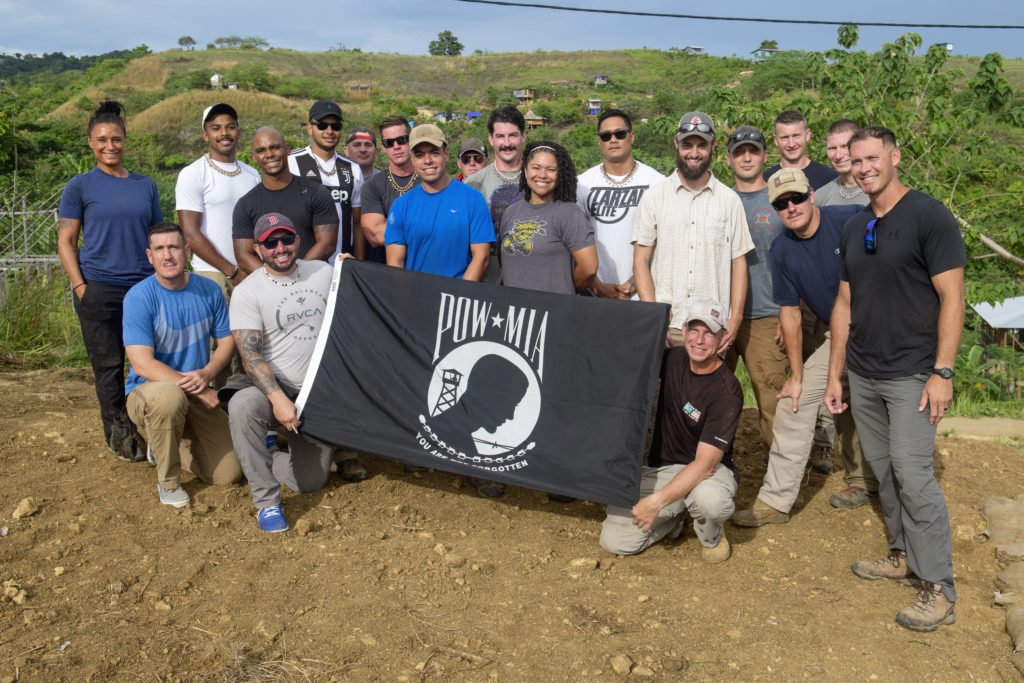
While the POW/MIA flag was originally created to honor those lost or captured during the Vietnam War, it has since come to represent every conflict in which the United States has been involved. On Aug. 10, 1990, the 101st Congress passed a law recognizing the League’s POW/MIA flag and designated it “the symbol of our Nation’s concern and commitment to resolving as fully as possible the fates of Americans still prisoner, missing, and unaccounted for in Southeast Asia, thus ending the uncertainty for their families and the Nation.”
Twenty-three years after Commander Hoff’s aircraft went down in Laos, Mary Helen Hoff received a letter from the Navy stating that based on interviews with Laotian villagers in the area, her husband did not survive the crash. His body was never recovered.
In a conversation with Cindy Cheatwood, Mary reflected on what was lost and what was unknown, but still had a message for today’s generation of warfighters and those back home supporting from the sidelines: “I just hope that young people will notice it and learn about it. It’s up to our schools to make this possible, and that’s why I feel like it needs to be told. You know, we all have heroes — young people need them more than we do.”

Dustin Lehmann is a combat veteran of both Iraq and Afghanistan. After his military service, he earned an undergraduate degree in American Literature and Economics and Juris Doctorate at the University of Cincinnati. He also deployed twice more as a private contractor. Dustin currently serves as the CEO of Risers Consulting and is the Founder of The Leadership Group (TLG). When Dustin isn’t working, he enjoys writing, spending time with his dogs, reading anything with a Marvel or DC stamp on it, and playing as much golf as possible.
BRCC and Bad Moon Print Press team up for an exclusive, limited-edition T-shirt design!
BRCC partners with Team Room Design for an exclusive T-shirt release!
Thirty Seconds Out has partnered with BRCC for an exclusive shirt design invoking the God of Winter.
Lucas O'Hara of Grizzly Forge has teamed up with BRCC for a badass, exclusive Shirt Club T-shirt design featuring his most popular knife and tiomahawk.
Coffee or Die sits down with one of the graphic designers behind Black Rifle Coffee's signature look and vibe.
Biden will award the Medal of Honor to a Vietnam War Army helicopter pilot who risked his life to save a reconnaissance team from almost certain death.
Ever wonder how much Jack Mandaville would f*ck sh*t up if he went back in time? The American Revolution didn't even see him coming.
A nearly 200-year-old West Point time capsule that at first appeared to yield little more than dust contains hidden treasure, the US Military Academy said.












